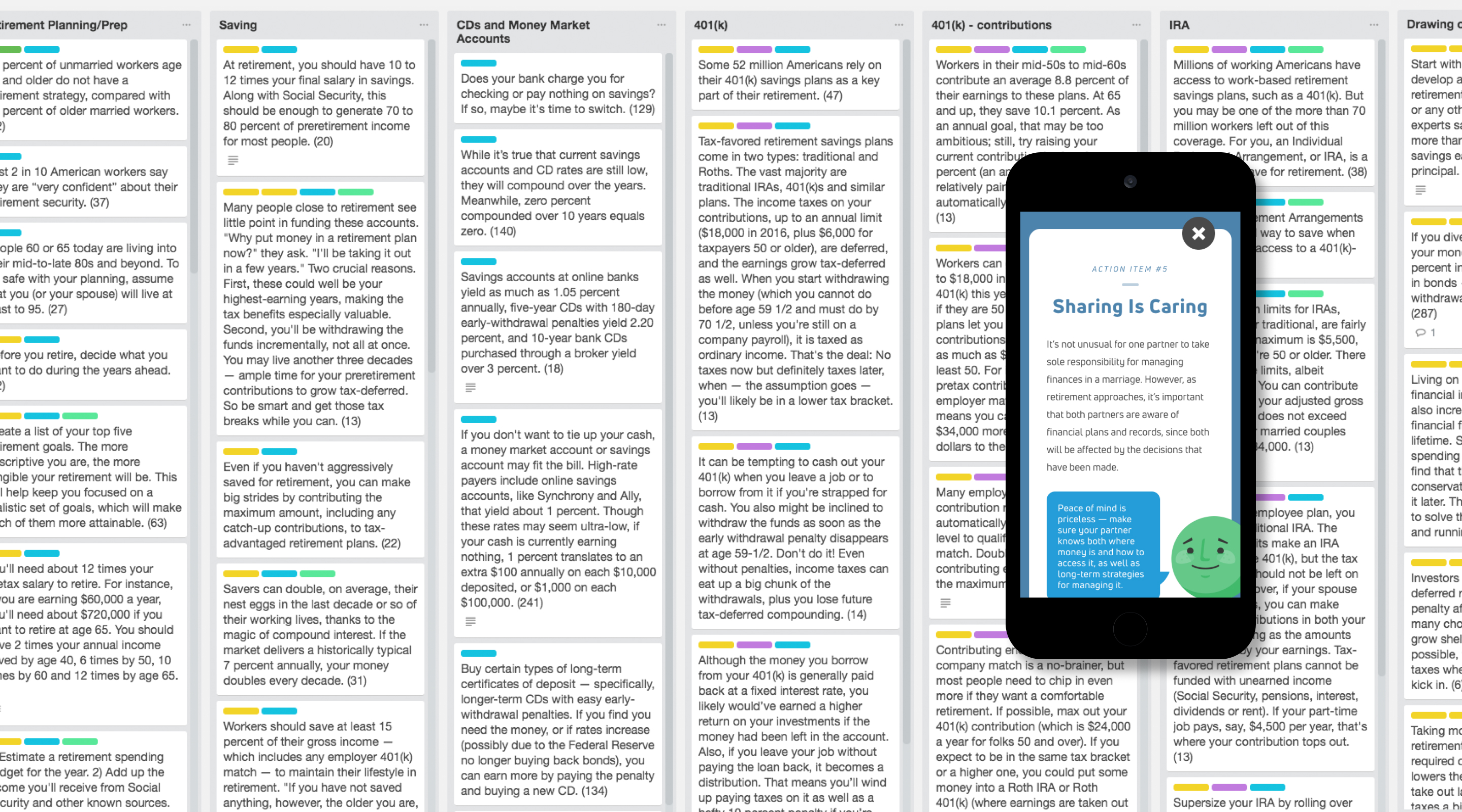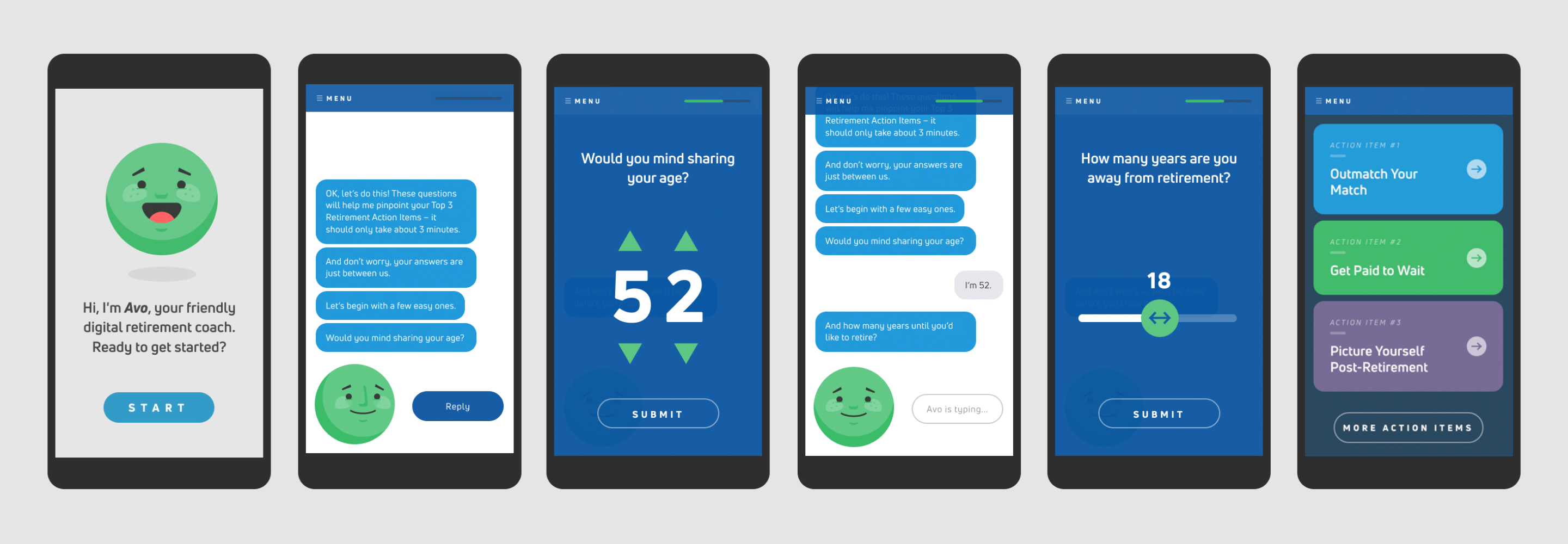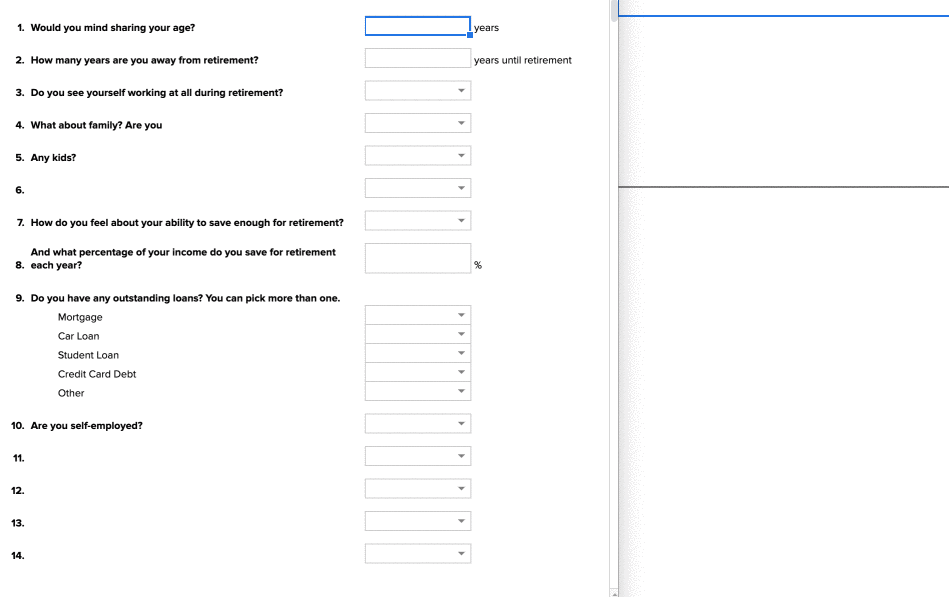Ace Your Retirement
For people in their late-40s and 50s, retirement can seem distant. In addition, life isn’t always predictable, which can create many financial pressures, whether it be acting as a caregiver or losing a job. All of that can make it difficult to save the money needed to retire. AdCouncil and AARP partnered to create a campaign to address people who were quickly approaching retirement, but who hadn’t been able to save. They wanted to encourage and empower them to start planning for retirement now.
Problem
Retirement calculators are often dire, which can leave people fearful and unsure about what to do next. Instead, we wanted to create an experience that encouraged those approaching retirement to take a meaningful step towards retirement today.
Solution
Collaborated with a team of copywriters, designers, and developers to create a friendly retirement coach to guide users through a set of questions, which returns a set of personalized, prioritized action items.
The Process
Categorizing Content
AARP had over 200 articles about how to prepare for retirement. But these articles weren’t tailored to the audience at hand. While AARP had detailed information about the relative benefits of annuities and whether you should consider a Roth or traditional 401(k), there was no checklist that simply laid out how to get started. That can be overwhelming for people new to retirement planning. To simplify, we started reading through each of the articles to find the relevant information and organizing the actionable tips into categories.
We then collaborated with subject-matter experts at AARP to determine which of these tips were most applicable to our audience. We finally narrowed to a set of roughly 20 action items that could help someone jumpstart their retirement planning.

Personalization
Early research had shown that our audience had negative attitudes to chat-type experiences that delivered generic or impersonal responses. As we were designing this digital campaign and the content around it, we wanted to design a chat-like experience that felt personal and conversational. In collaboration with several designers and copywriters, we developed a script and a character named Avo who would ask questions and give reassuring and encouraging responses as a user engaged with the chat. But all that work wouldn’t be useful, if the payoff, the results delivered at the end of the experience, seemed generic. We needed to make sure that the list of action items wasn’t just a standard list, but was tailored to the user’s particular situation.

Prototyping
With questions, answer options, and action items all determined, we now had to decide which answers would trigger which action items. We prototyped the logic in a dynamic spreadsheet to test the results of different response sets for a few key personas we had in mind. This allowed us to see whether the logic we had mapped was working as expected or whether we needed to tweak it before building.

Testing & Iterating
After launch, we continued to monitor site traffic, analyzing who was coming to the site and what types of results they received. Our research team conducted interviews with some members of our target audience and found that certain action items resonated more with them, either because they seemed more tailored to their situation or provided actionable advice that felt fresh. Prioritizing those action items in their results would likely help them feel that the experience was more personalized and valuable. In light of these findings, we’ve continued to make adjustments to the copy of questions and action items, as well as the logic.
